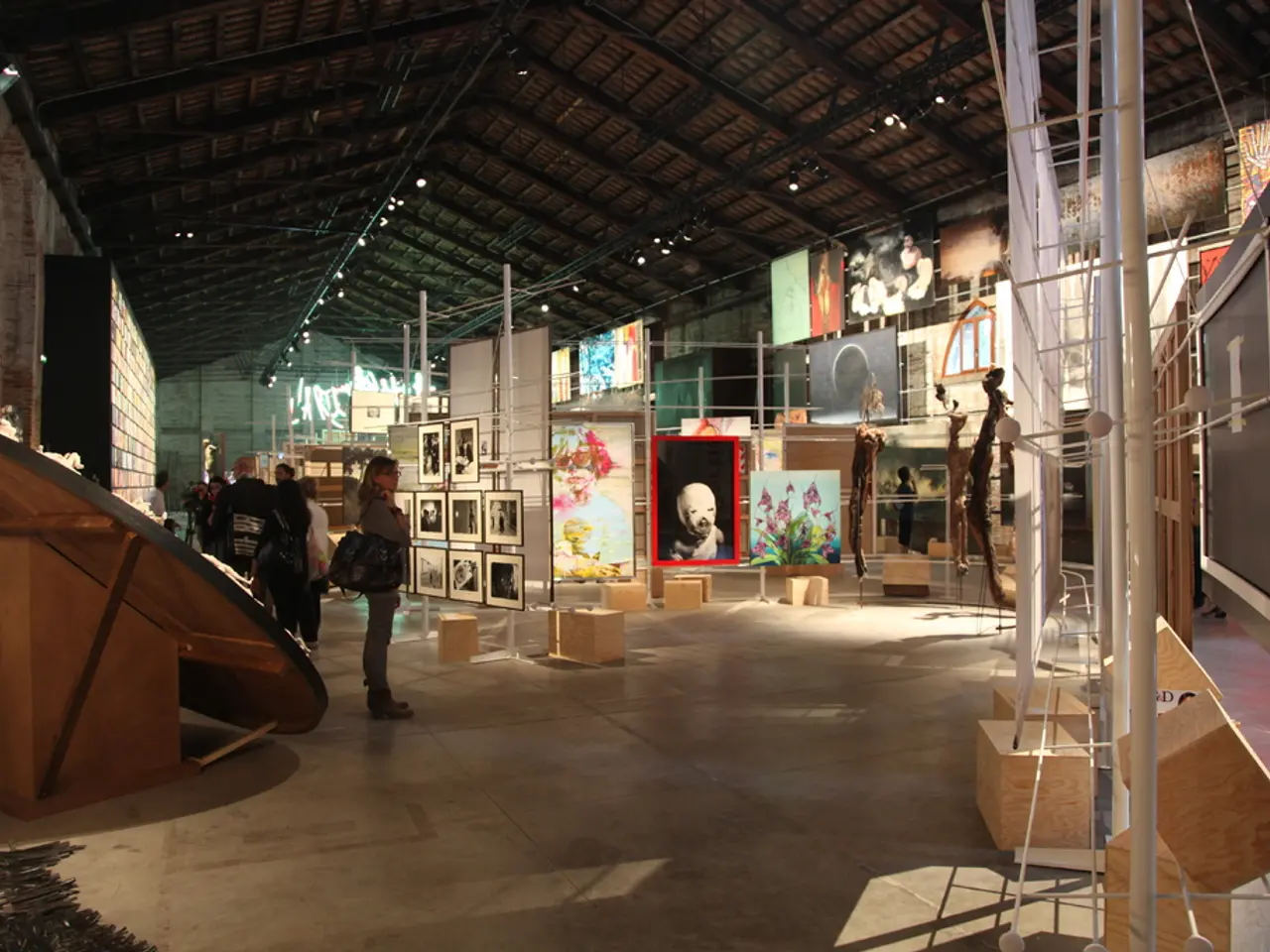Digital Art Gallery Transforming Physical and Digital Presence on the Web Scene
==============================================================
Generative Gallery, a pioneering digital and media art gallery established in 2018, has been at the forefront of exhibiting and promoting generative and digital art. However, specific details about its expansion and future plans remain undisclosed. Nonetheless, we can draw insights from the broader context of the growing digital art landscape.
Generative Gallery's focus on generative and digital art places it within a burgeoning field of institutions that embrace media and algorithmic art. This field is gaining prominence due to advancements in AI, blockchain, and immersive technologies, as evidenced by large-scale exhibitions such as the Toledo Museum of Art’s "Infinite Images" and Beijing’s Taikang Art Museum.
As the digital art world evolves, galleries like Generative Gallery are likely to adapt their strategies to keep pace. Future expansion and plans for such galleries typically include broadening exhibition scope, deepening educational programs, hosting special projects, fostering international collaborations, and archiving efforts.
Expansion of exhibition scope may involve showcasing AI-driven and algorithmic art, interactive works, and cross-disciplinary collaborations. Educational programs aim to increase public understanding of generative art’s history, technology, and creative potential. Special projects often engage with emerging media formats like immersive installations, live coding performances, and blockchain-based art transactions.
International collaborations and travelling exhibitions help galleries like Generative Gallery strengthen their footprint and artist network, given the global interest in digital and generative art. Archival efforts and publishing are essential for documenting and interpreting the evolving generative art narrative.
Without direct information on Generative Gallery’s specific future plans, the broader context suggests it may be aligning itself with trends in exhibiting pioneering AI and algorithmic art, expanding educational outreach to include digital literacy and creative coding, hosting live and hybrid events connecting digital artists and audiences, and developing collaborations with museums, festivals, and digital art platforms globally.
For more precise or current details about Generative Gallery’s strategic plans, it's recommended to check the gallery’s official communications or contact them directly. The gallery's website, generativegallery.our, serves as a portal for a global community and enhances the gallery's visibility in the digital scene.
Since its revival in 2021, Generative Gallery has realized more than 10 international exhibitions, including projects in Dubai, Israel, and online projects not connected to a specific location. The team is currently considering acquiring their own gallery space to further solidify their position in the digital art world.
Generative Gallery initially launched as a network, community of web artists, curators, and other digital professionals. It was founded by Ivan Nefedkin, the founder and creative director of Radugadesign multimedia design studio. The gallery's team has experience and expertise in multimedia and CG, and is familiar with the processes of large complex projects.
In conclusion, while specific details about Generative Gallery’s future plans remain elusive, its commitment to pushing the boundaries of digital art is evident. As the digital art landscape continues to evolve, Generative Gallery is poised to play a significant role in shaping its future.
Data-and-cloud-computing solutions may be integral to Generative Gallery's future expansion, enabling them to manage larger digital art collections and host immersive experiences in a scalable manner.
In the realm of technology, artificial-intelligence algorithms could potentially be harnessed by Generative Gallery to curate and analyze their growing collection of generative and digital art.




